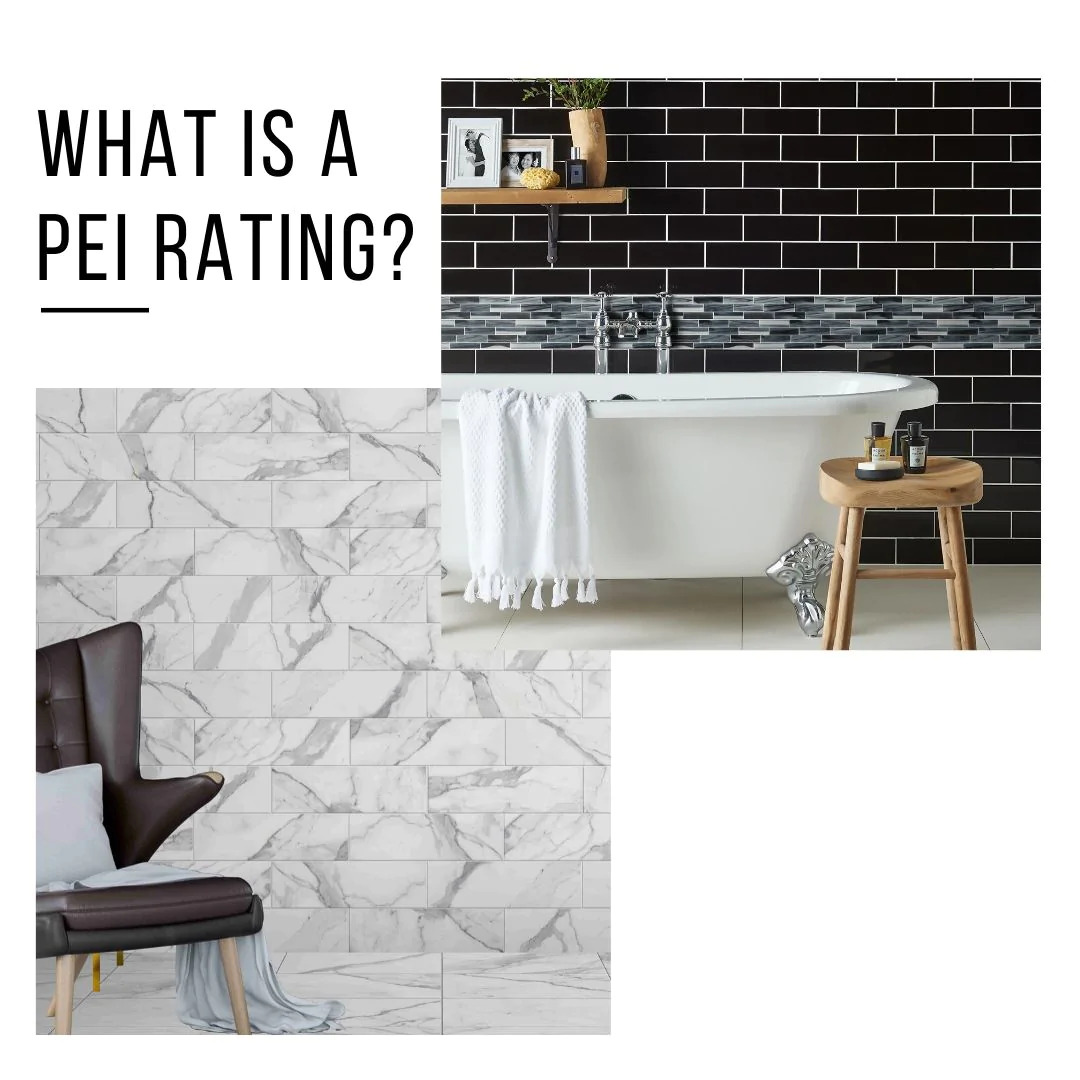- Home
- What is a PEI Rating
What is a PEI Rating

Understanding PEI Rating + What It Means When You Choose Your Next Tile
Your new home is almost set. You meet up with the contractor, and the only thing left to do is complete a tiny yet important detail of your home: Tiling. You browse through the best colors, designs, and styles, but a key quality of choosing tiles is one that only a few people know about, and remember to ask their tile maker: PEI rating.

What is it? How do you use it? And how do you make decisions based on it?
Here is our quick guide on how PEI ratings are essential and can impact your decision-making process when buying your next set of tiles.
What is the PEI Rating of Tiles
PEI is the abbreviation of Porcelain Enamel Institute, an institute based in Norcross, GA. It is dedicated to regulating the standards of Porcelain enameling plants and their suppliers.
PEI rating defines ceramic products' hardness and durability, mainly tiles. It shows how much wear-resistant the enamel glazing layer of a tile is. The higher the PEI, the more wear-resistant the enamel glazing of the tiles would be.
Just to be clear, though, PEI doesn't indicate the total fracture strength of the entire tile; it only shows the strength of its glazing.
How is the PEI measured?
Any tile's PEI rating is measured using the rotary abrasion resistance testing machine. In the PEI testing process, a set of steel ball bearings is pressed down and rolled over against the tile surface, and an observer is there to keep track of the effect. The ratings are issued based on how many revolutions of the machine's abrasion head it takes for the tile to have some visible abrasions appear on the surface.

The more challenging the enamel on the glazed tile is, the more revolutions of the machine head it will take to create visible abrasion, and hence, the higher the PEI of the tile will be.
Known as the PEI scale, this rating covers tile hardness for flooring. Tiles are rated on a scale of 1 to 5, with five being the most durable.
PEI Rating: Classes and their suitable applications based on it?
Scale 0 - For light-duty usage. Never use for underfoot applications.
For example, display area, walls in the unused spaces, encased areas, etc.
PEI 1 - Suitable for residential and commercial walls. Not intended for foot traffic.
For example, backsplashes, bathroom walls, accent walls, etc.
PEI 2 - Suitable for residential light foot traffic. For this rating, think of areas where people usually walk around with tiny amounts of scratching dirt.
For example, dining rooms, living rooms, bathrooms, etc. Not suitable for residential areas subjected to continuous or heavy foot traffic.
PEI 3 - Suitable for light usage in commercial spaces and all residential areas. Think of the spaces where there could be a sizable amount of people wearing conventional footwear.
For example, residential halls, kitchens, foyers, laundry rooms, meeting rooms, commercial offices, reception areas, boutiques, clinics, showrooms, etc.
PEI 4 - Suitable for residential, medium commercial, and institutional areas with light applications. PEI 4-rated tiles are durable and highly reliable if you use them for your home modeling.
Some of its applications for example are-- hotels, restaurants, hospital lobbies, public corridors, etc.
PEI 5 - Suitable for most demanding applications, heavy traffic, and heavy footfall in both commercial and residential settings. These are the heavy-duty tiles with nearly permanent glaze. PEI 5-rated tiles that can withstand a lot of damage, abrasive dirt, and moisture.
Their application areas, for example, are malls, public buildings, subways, public transport spaces, or swimming pools.
NR: This applies to natural stone and other unglazed materials that are not glazed and hence have no PEI ratings.
Quick Note:
PEI Ratings are strictly indicators of a tile's strength and durability. It does not necessarily describe its overall value and pricing.
In some scenarios, some tiles may have a PEI rating of only 1 or 2 and can be more costly than one with a rating of 4 or 5. For example, if you are choosing a tile for your shower, there should be little emphasis on the PEI rating. But when you are choosing a tile for light traffic areas like your living room or your floor, taking it into consideration is recommended.
How do I choose the right tile for my settings?
After knowing all the essentials about the PEI tile rating, it's important to remember that each class is suitable for a particular application only. A light-duty tile with a 0 or 1 PEI rating cannot be used for commercial setups or floors because it will likely crack.
On the other hand, a thick, class 5 tile cannot be used for indoor walls because it will be too heavy for the wall adhesive to hold and may eventually cause problems.
Some tiles and manufacturers don't even carry PEI ratings, so it's best to be informed beforehand about what applications the particular tile is suitable for.
Tiles that are designated as floor or wall tiles based on other criteria must be used for their desired application only. As wall tiles are not designed for barefoot traffic and receive almost no wear, they need to work better on the floors and vice versa.
Not all manufacturers provide PEI and other details about the tiles, so always be sure of the suitable applications of the tiles that you buy before you order them.
